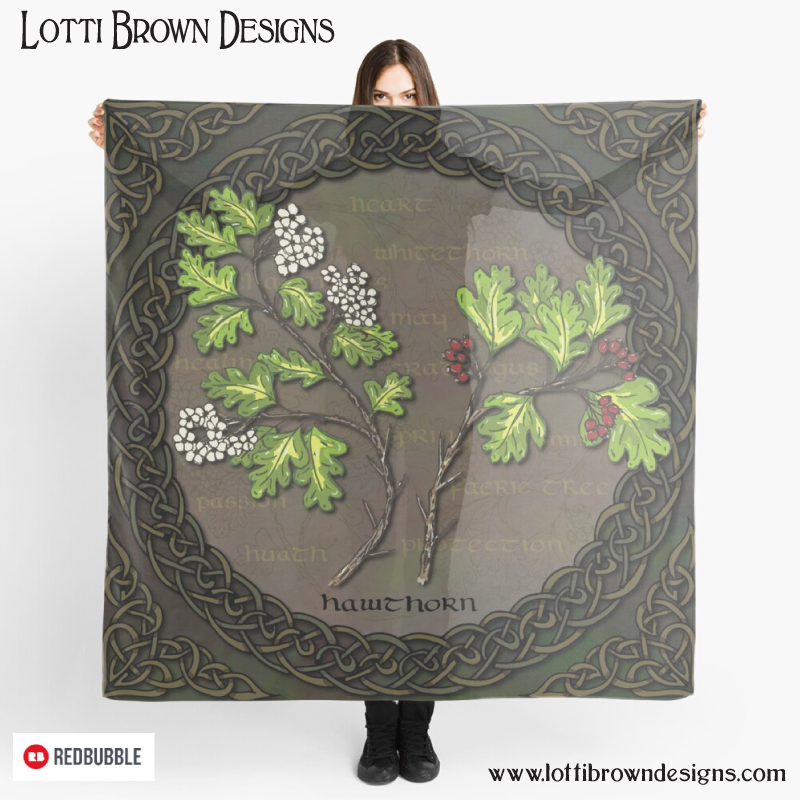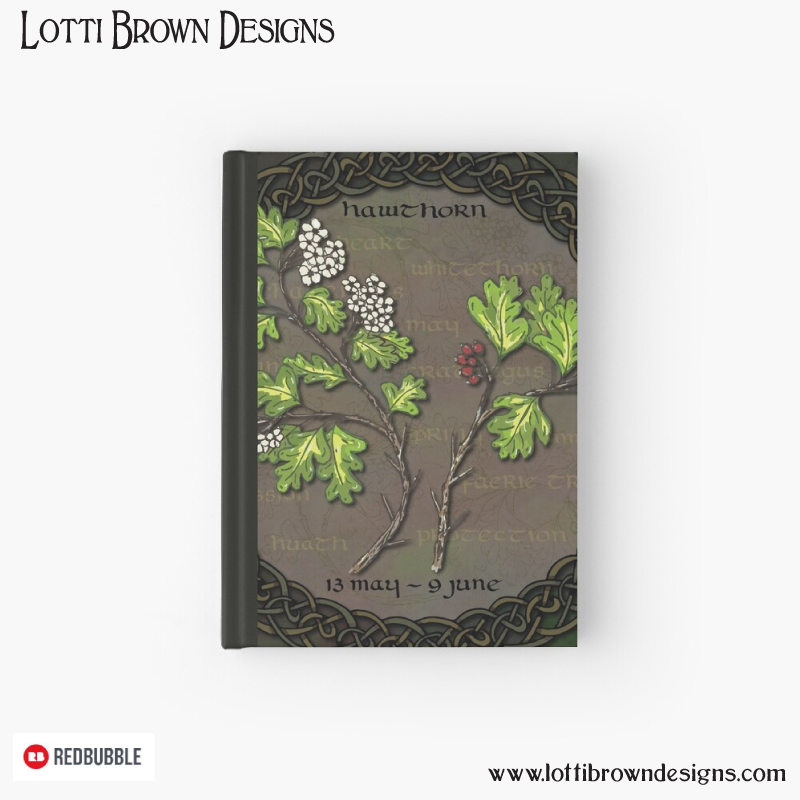*** IMPORTANT - I'm retiring my digital files - SVG/PNG/DXF/EPS - and printables from 31st December 2025 ***
*** Please ensure that you have everything you need - files and/or instructions printed off from the website (find them currently in the ARCHIVES section) - by 31st December 2025 as they will not be available after this date ***

Hawthorn Tree Meaning & Symbolism
- Home
- Art - Living Archives
- Celtic Tree Art
- Hawthorn Meaning
Explore hawthorn tree meaning and symbolism with me as part of my Celtic Tree Calendar art project...
Hawthorn is the May Tree - a tree symbolizing fertility, masculine energy, magic and connections.
In the Celtic Tree Calendar, hawthorn covers the time period between May 13th to June 9th.
If you're wondering what the Celtic Tree Calendar is, you can discover that here!
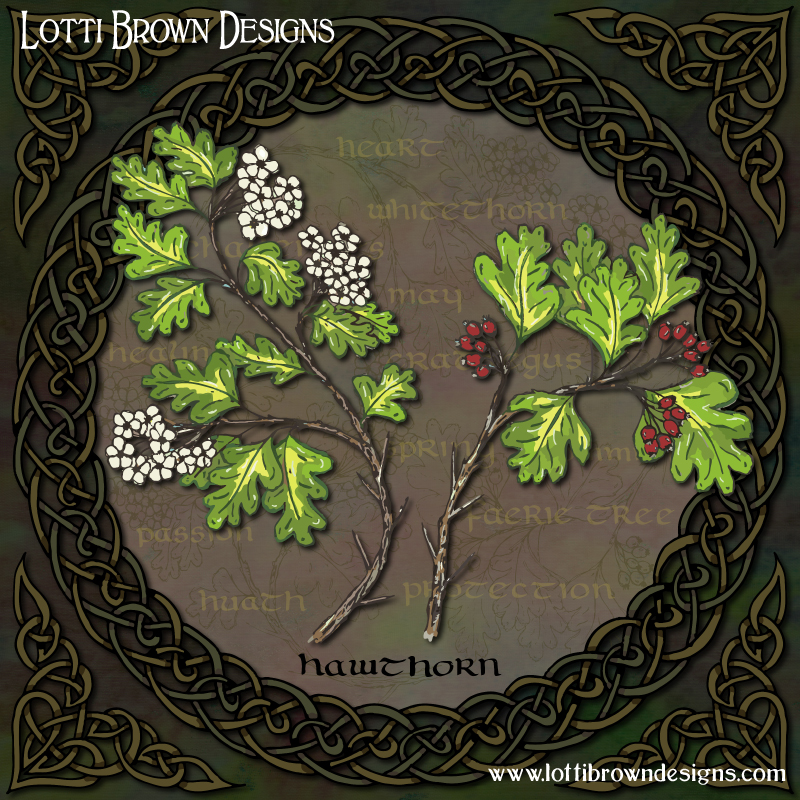 Celtic Hawthorn art by Lotti Brown
Celtic Hawthorn art by Lotti BrownCeltic Tree Calendar - Hawthorn Tree: 13 May to 9 June
- Latin name: Cratageus monogyna
- Irish/Gaelic name: Huath
- Common names: May, May-tree, whitethorn, haw-bush, hag-bush, hag-thorn, may-flower, moon-flower, mother-die, quicks, quickthorn, whicks, wick, wickens
- Qualities: protection, love, vitality, bringer of Spring, overcoming challenges, worthiness, transition, healing, cleansing
- Associations: fertility, passion, love, marriage, Cardea, May Queen, May Day, Beltane, Spring, Blodeuwedd, Culhwch and Olwen, boundaries, fairies, Madron, Midsummer's Day, Joseph of Arimathea, Tudor royalty
This is part of my Celtic Tree Calendar art series that I did in 2020-21 discovering more about our native trees and how they're interwoven into our history and culture.
Hawthorn Tree Meaning, Myth & Symbolism
 Lone hawthorn tree
Lone hawthorn treeHawthorn, commonly known as whitethorn or may, is one of our most beautiful spring trees in the countryside, where you will often see it in hedgerows festooned with tiny, white, pungently-scented blossoms, during the month of May.
Hawthorn is a native tree to the British Isles and in Irish Brehon law, dating from early Celtic times, the hawthorn was known as a ‘peasant tree’.
Historic pollen records show hawthorn was in Britain at least as early as 6000BC.
The Gaelic name for hawthorn is ‘huath’ – which may also relate to the Anglo-Saxon word ‘haw’ which is believed to mean ‘hedge’.
Hawthorn is now widely used as a hedging plant after the 19th century General Enclosures Act, but in earlier times, the wood was used to make small personal items such as knife handles, combs and trinket boxes.
It’s a tree that grows alongside people and has become a part of our lives and traditions…
Hawthorn has also been used as a black dye as well as for healing and as a foodstuff – the old country name for hawthorn is ‘Bread and Cheese’ and the berries can be made in tasty jellies, chutneys and jams, while both berries and flowers can be drunk as a herbal tea.
Tree of Passion
Hawthorn has a strong association with fertility, passion and love.
The Ancient Greek goddess Hera conceived twins, Ares and Eris, when she touched hawthorn blossoms – and hawthorn is also the tree of the Roman goddess Cardea…
Cardea is the consort of the god Janus, from whom we take the name for the month of January. He’s the god of doorways – openings and endings.
It’s said that Janus gave Cardea hawthorn and she uses it to protect the doorways and thresholds of the home space. Cardea is especially associated with giving blessings for weddings and providing protection for both women in childbirth and babies.
Hawthorn seems to be particularly associated with wedding celebrations, perhaps because of its longtime reverence as the tree of that iconic May Day marriage of springtime that’s re-enacted in villages across Britain – the crowning of the May Queen, often bedecked in may blossom, and her joining together with the Oak King.
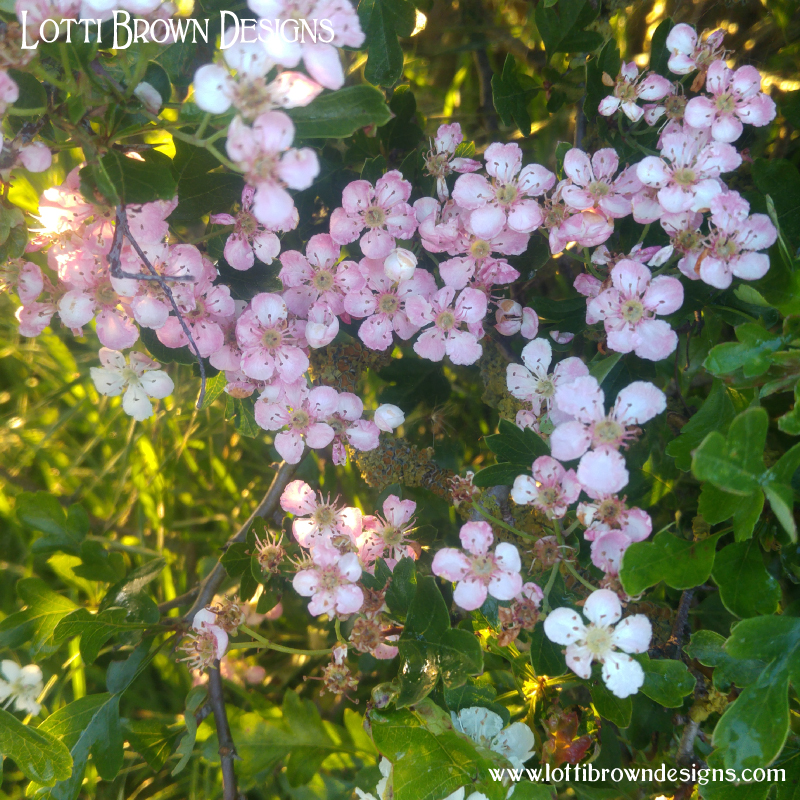 May blossom
May blossomThe first of May, Beltane, has traditionally been the moment of the year when Spring (may) enjoins with Summer (oak) – and has, historically, been a celebration of springtime passions when garlands and crowns are woven from may blossoms and the people go ‘a-maying’ or ‘garlanding’ to celebrate the greenery of the season – “bringing in the may”.
This was a good time for love spells as well. Young girls would look for the first flowering of the may blossom and would break a twig, allowing it to hang…
That night, they would dream of their future husband – and in the morning, would return to find the twig and keep it as a charm while awaiting their beloved.
Chaucer, in the 14th century, notes how hawthorn is associated with springtime vitality and passion:
“Mark the fair blooming of the Hawthorn Tree,
Who, finely clothed in a robe of white,
Fills full the wanton eye with May’s delight.”
The Spring Tree
The May Day rituals of the hawthorn blossom make the whitethorn well and truly a symbol of spring.
In pre-1752 calendars, May Day would’ve fallen in mid-May in our modern calendar – so the may blossom would’ve been truly abundant, and it would really feel like Spring had well and truly sprung!
Even today, we know the saying:
“Cast ne’er a clout till May be out.”
Meaning – keep your winter woollies on until the may blossom is out (ie until it’s really spring). May blossom was seen as the bringer of Spring.
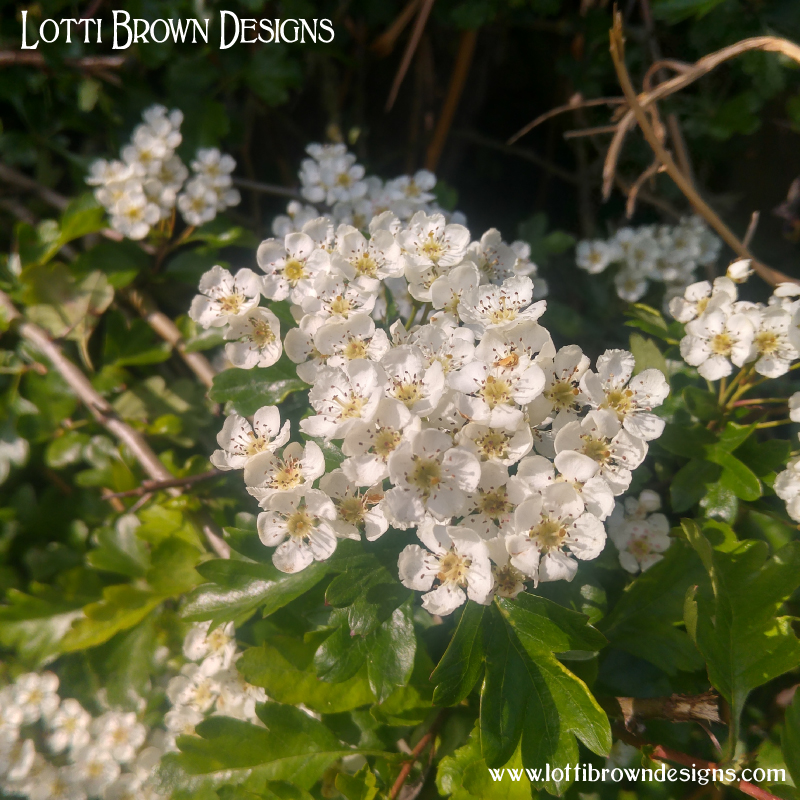 May blossom
May blossomMay blossoms and may branches feature widely in May Day celebrations across hundreds of years. It’s thought that the May Queen represents the Celtic goddess Blodeuwedd.
Blodeuwedd is a springtime goddess associated with hawthorn and said to have been created magically from nine different kinds of spring flowers to be the wife of the Celtic sun god Lleu Llaw-Gyffes.
In May Day celebrations, the May Queen needs to be symbolically ‘won’ by the Oak King – also sometimes recognised as the Green Man or Jack-in-the-Green/Jack-in-the-May – he wears hawthorn blossom, too, in his costume of greenery.
The idea of the suitor to the May Queen having to ‘win’ her or prove his worthiness is also one of the associations of the qualities of the hawthorn tree – the idea of the challenge…
The Tree of Challenges
If we see the ‘winning’ of the May Queen as a challenge of worthiness for the suitor, we can also see aspects of this in earlier hawthorn stories…
In the story of Culhwch and Olwen from the Mabinogion, Olwen’s powerful father, Yspaddaden Pencawr (translated as ‘Giant Hawthorn’) sets 39 impossible tasks that suitor Culhwch must complete before he’s considered worthy to marry Olwen.
Culhwch completes them (with the help of King Arthur) and ‘wins’ Olwen’s hand in marriage.
Olwen is known as “she of the white track” for the beautiful white blossoms she trails behind her.
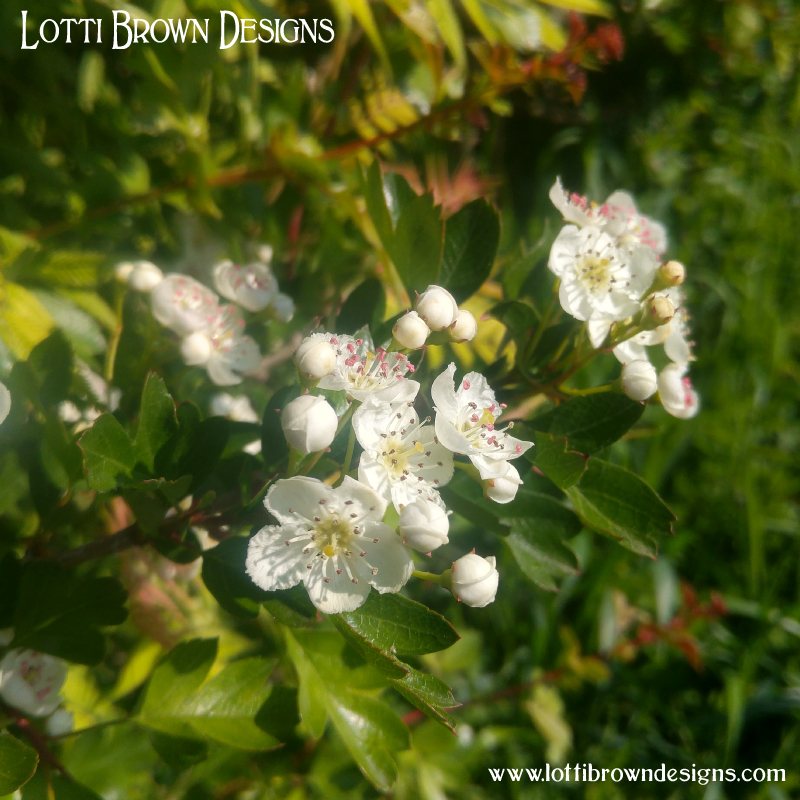 May blossom
May blossomIn Celtic legends, Cuchulainn calls hawthorn ‘most difficult night’ and Oengus calls hawthorn ‘whitening of the face’ – a moment when the face goes white at the thought of the challenges that lie before us.
It is said that the Roman hawthorn goddess Cardea (who we met a little earlier), will only bless a marriage where the husband-to-be has proven his worthiness to his bride.
As the goddess of doorways, Cardea can help us transition through these challenges that lead us into a different phase of our lives.
Tree of Protection
Hawthorn has traditionally been seen as the tree of protection.
As a hedgerow, it protects many little birds and animals, and up to 50 different species of insect.
Farm animals will flourish in a field where hawthorn grows. And hanging may blossom on the cowshed door on May Day morning protects the milk – while a twig of hawthorn when bringing home the harvest brings good luck.
Hawthorn also protects boundaries – in Cornwall, clods of earth with a sprig of hawthorn were often left on boundary stones to protect the boundary of a farm or village area.
Hawthorn hedges are still seen as powerful boundary protection for our modern homes, gardens and fields.
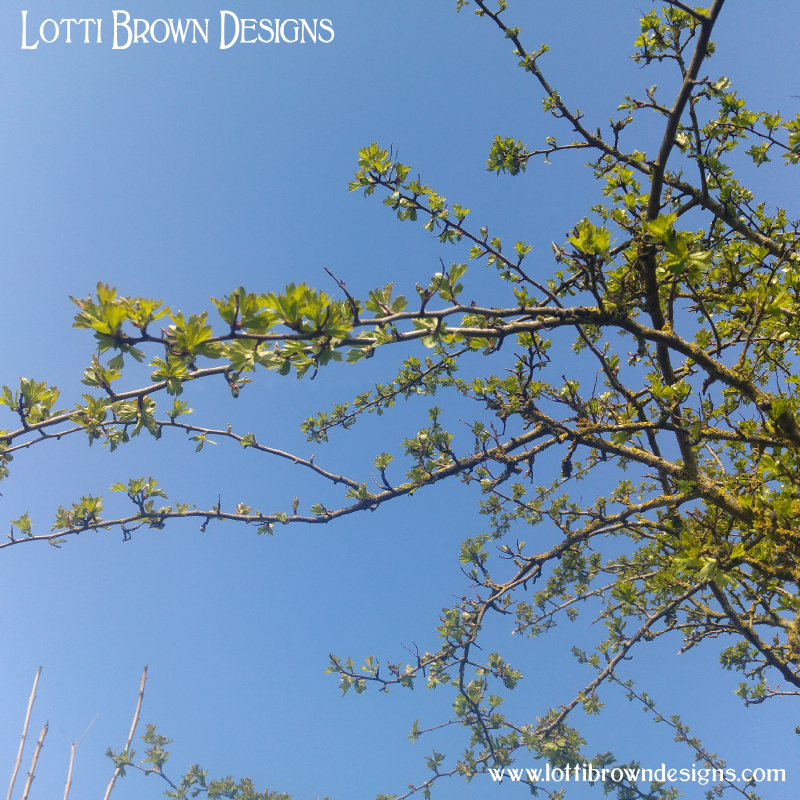 Hawthorn branches
Hawthorn branchesHawthorn branches and twigs, or garlands of hawthorn berries, would be set around hearths and around the beds of pregnant women and children for protection.
Gathering may on Holy Thursday and laying it up in the rafters of a home was thought to protect against lightning. Similarly, a hawthorn sprig in your hat would protect you against lightning strikes while you were out and about.
A twig of hawthorn collected at midnight on Twelfth Night and kept in the house would protect against bad luck.
And a globe of woven hawthorn would be brought into the kitchen at the start of every year as a ‘fairy house’ for the house ‘brownies’ in order to ask for their protection and help.
The hawthorn globe from the previous year would be ritually burned and then scattered onto the fields before the spring seeds were sown in order to ensure a bountiful harvest.
The hawthorn would often grow as a single tree specimen, often near springs or wells which were seen as sacred places.
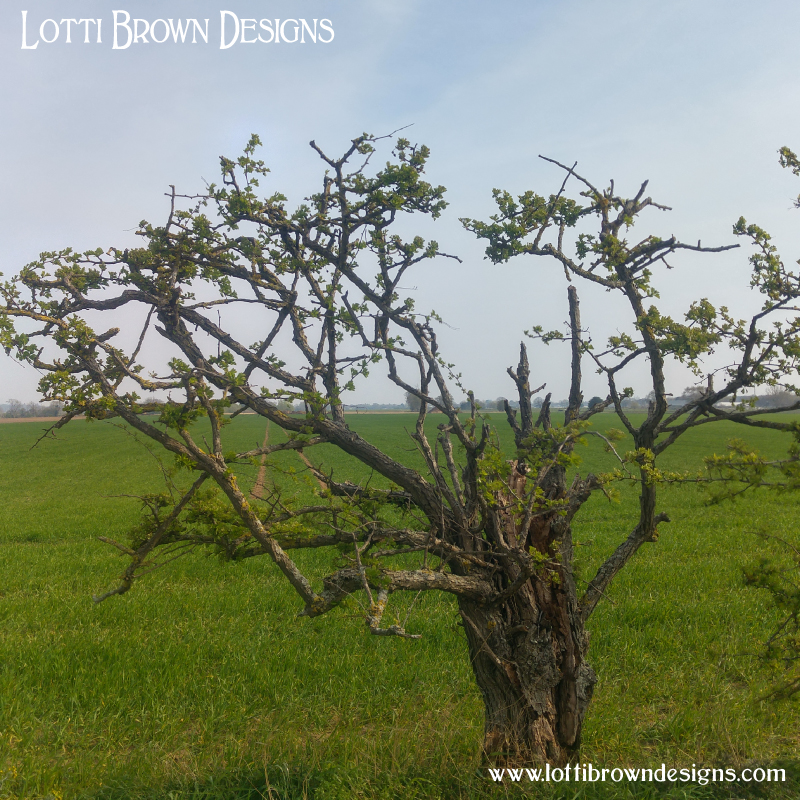 Hawthorn tree
Hawthorn treeIn England, these ‘solitary thorns’ were the places where manorial courts or administrative ‘moots’ and meetings were traditionally held. In Ireland, these were known as ‘sentry thorns’ or ‘fairy trees’ and were seen as the guardians of these sacred places, who protected the earthly inhabitants of the place from dangerous incursions from the fairy world.
Hawthorn was also used in the home to protect against ghosts and evil.
Fourteenth century author John Mandeville writes:
“And therefore hath the white thorn many virtues! For he that bearest on hym thereof, none manner of tempest may dere him: be in the hows that yt is ynne may none evil ghost entre.”
The Healing Tree
As well as protection, the hawthorn could provide healing.
The hawthorn ‘fairy trees’ were also visited for healing, such as the hawthorn at Madron Well in Cornwall which is associated with the Celtic mother goddess Madron/Modron.
Such healing trees are often decorated, even today, with small strips of cloth (or ‘clooties’) tied to and around the tree to request healings of blessings of the spirit of the tree.
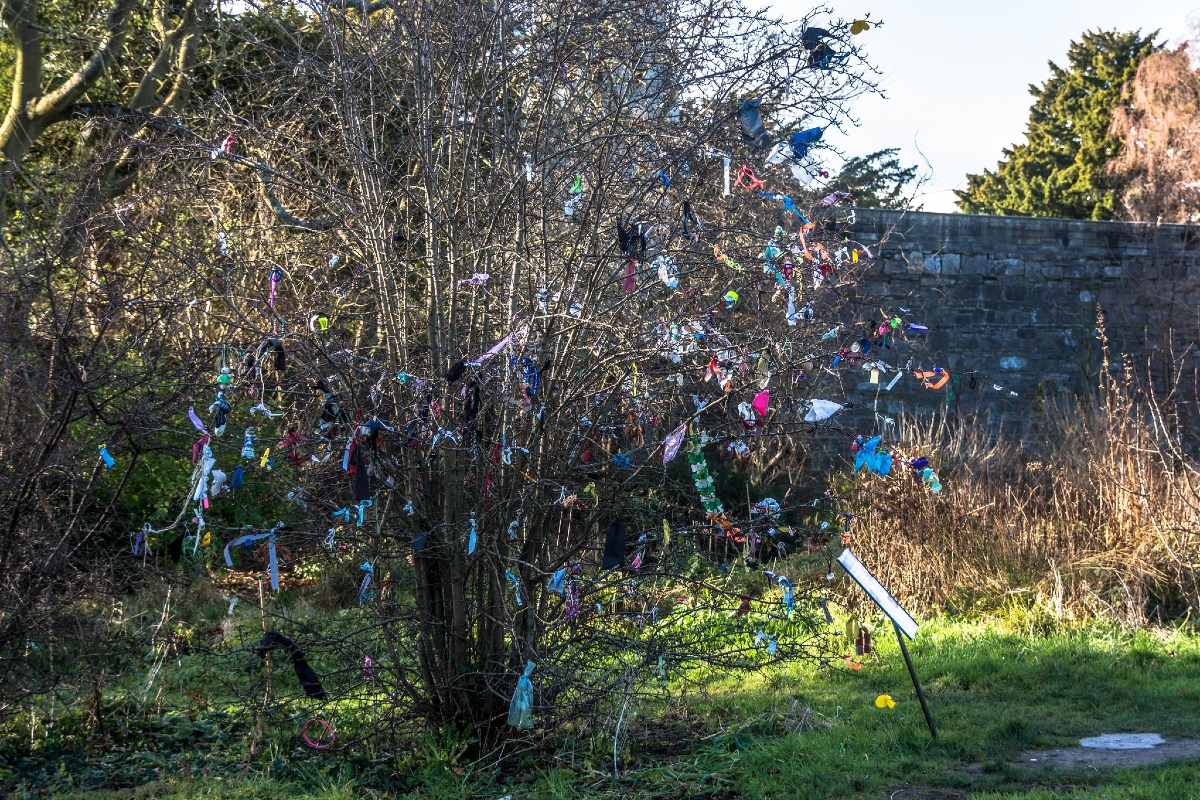 Hawthorn wish tree
Hawthorn wish treeSometimes, the ‘clooties’ were dipped into the sacred waters and applied to the sick before tying the cloths to the tree.
On old Midsummer Day (5 July) hawthorn trees would be blessed and decorated with flower garlands and red ribbons in a ceremony known as ‘bawming the thorn’.
There is a modern version of this ritual happening still in Applethorn in Cheshire in late June each year where children will decorate the hawthorn tree and dance around it.
Hawthorn has seen traditional use in herbal medicine too…
Hawthorn is often used as a gentle tonic for heart conditions and is known as ‘valerian of the heart’.
It has been used for palpitations, anxiety, improving circulation, sore throats, kidney problems diarrhoea, menopause and also to aid recovery from long illness or trauma.
Hawthorn flowers are thought to be good for the complexion and for clearing facial blemishes and encouraging inner as well as outer beauty…
“The fair maid who the first of May,
Goes to the field at the break of day,
And washes in dew from the Hawthorn Tree,
Will ever after handsome be.” – Anon.
The flower essence for hawthorn is for emotional balance and to heal stress or grief.
The Sacred Tree
Historically, hawthorn has been seen as a sacred tree, often growing near sacred wells, springs, and pools.
The ‘fairy trees’ or ‘faery thorns’ were respected and it was seen as very advisable never to harm a hawthorn, nor never to cut it except for ritual purposes when you would make a prayer and ask permission before taking any. Specifically, you should not clear hawthorn for practical purposes lest misfortune befall you!
Tales are told of a farmer in Worcestershire who cut down his hawthorn tree – he broke his leg, then his arm, and if that were not enough, his farm burned down completely.
Another time, at Clehonger, the would-be-hawthorn-feller stopped in his tracks as he saw blood flow from the trunk of the tree!
While in Ireland, a man trying to fell a hawthorn was pierced by a thorn and died of septicaemia.
A tree to treat with the utmost respect, indeed!
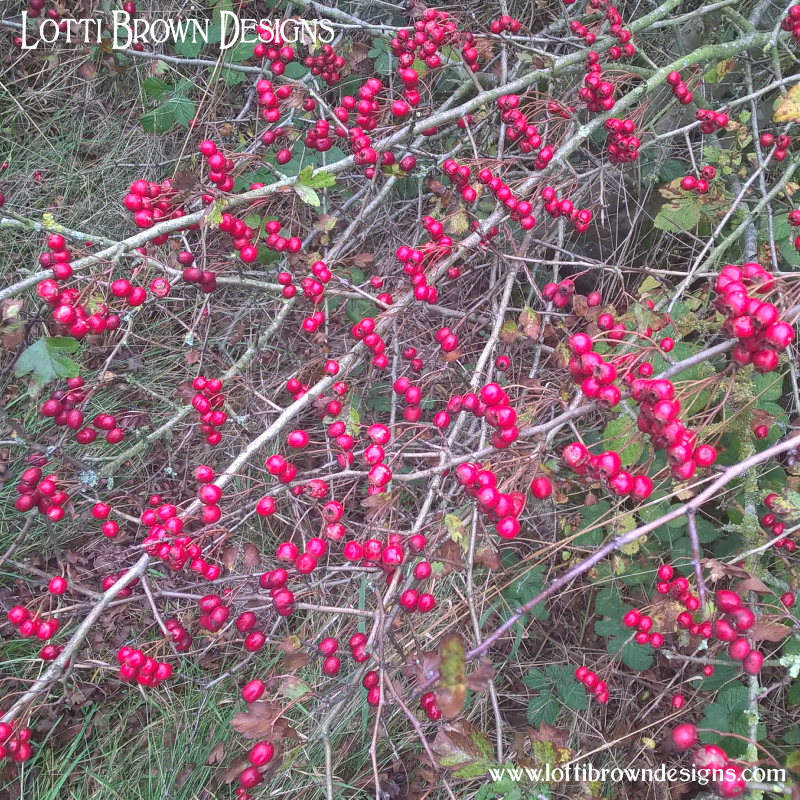 Hawthorn berries
Hawthorn berriesHawthorns were also thought to be able to heal or cleanse the land. Hawthorns were often planted close to where an accident or death had occurred to remove negative energy.
Sometimes, the waters used to wash the body of the deceased was poured onto the roots of the hawthorn so that it could cleanse the energies.
In 1968, the Ballinata-Rossnowlaugh road in Donegal, Ireland was rerouted to save uprooting a hawthorn tree.
And even in 1999, Eddie Leninhan campaigned to save a hawthorn tree in County Clare, Ireland from being bulldozed to make way for a motorway, worrying if:
“…they bulldoze the bush to make way for a planned highway bypass, the fairies will come. To curse the road and all who use it, to make brakes fail and cars crash, to wreak the kind of mischief fairies are famous for when they are angry, which is often.”
The tree was saved and this motorway, too, was rerouted.
The Holy Tree
The hawthorn is a Christian holy tree too.
It is said that Moses spoke to God on Mount Horeb through a species of hawthorn (Crataegus pyracantha).
And the Albiespyne hawthorn is thought to have been the thorns that made the crown of thorns for the Crucifixion – the hawthorn became holy from being on Jesus’ head.
Perhaps the most compelling holy hawthorn is the Glastonbury Thorn…
As the tale goes, Joseph of Arimathea arrived in Britain to spread the word of God, arriving at Avalon/Glastonbury after a long journey.
He rested for a while on Wearyall Hill and his walking staff took root there, becoming a hawthorn tree.
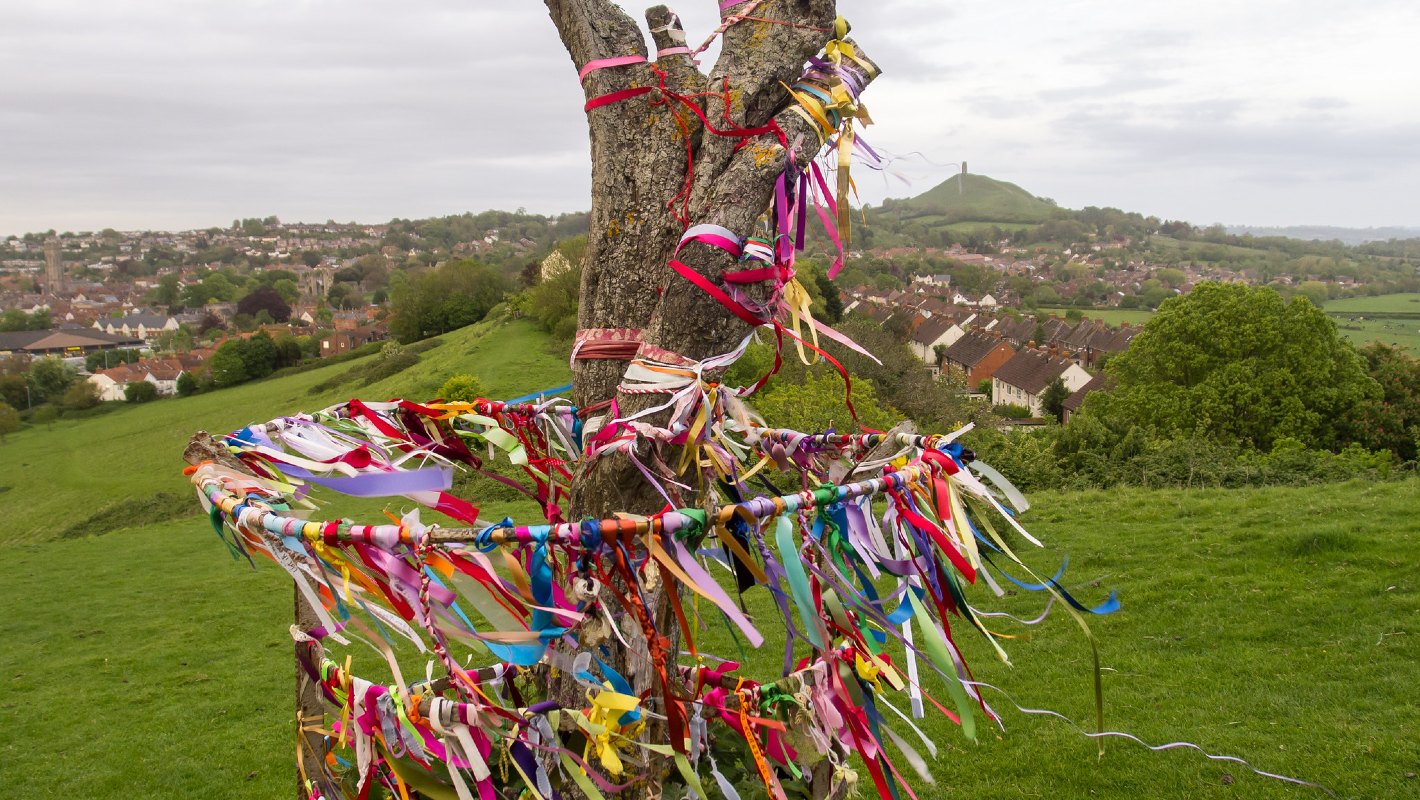 Glastonbury Thorn Wearyall Hill
Glastonbury Thorn Wearyall HillThis particular hawthorn is special because it flowers twice a year – in Spring/Easter and again in winter/at Christmas – to mark the birth and resurrection of Jesus.
During the English Civil War, one of Cromwell’s men felled the Glastonbury Thorn and burned it… but the tree got its revenge by blinding him with a thorn in the eye.
The Glastonbury Thorn was replanted in 1951, to mark the Festival of Britain, from cuttings that had been taken from the original tree by locals and grown in other locations in the town of Glastonbury.
The monarch iss traditionally sent one of the flowering sprigs of the Glastonbury Thorn for Christmas each year, where it sat on their desk for the Christmas speech to the nation.
In 2010, the Glastonbury Thorn at Wearyall Hill was cut and damaged beyond saving and was finally removed in 2019.
Today, the sprig for the monarch is sent from the Glastonbury Thorn in St John’s churchyard in the town – and other Glastonbury Thorns exist at Chalice Well and in the grounds of Glastonbury Abbey.
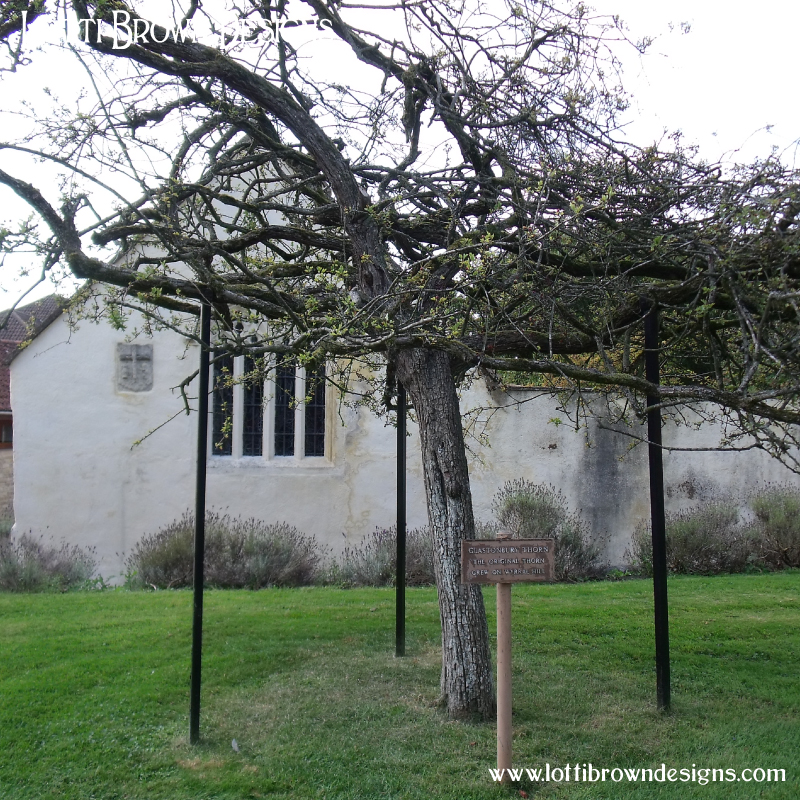 Glastonbury Thorn Glastonbury Abbey
Glastonbury Thorn Glastonbury AbbeyThe Royal Tree
The hawthorn is a ‘royal’ tree and was chosen as the emblem of the Tudor house after Henry Tudor, in 1485, was crowned with the crown of Richard III of the Plantagenets after finding the crown in a hawthorn bush at the Battle of Bosworth – so becoming King Henry VII and bringing about the saying:
“Cleve to thy crown though it hangs from a bush.”
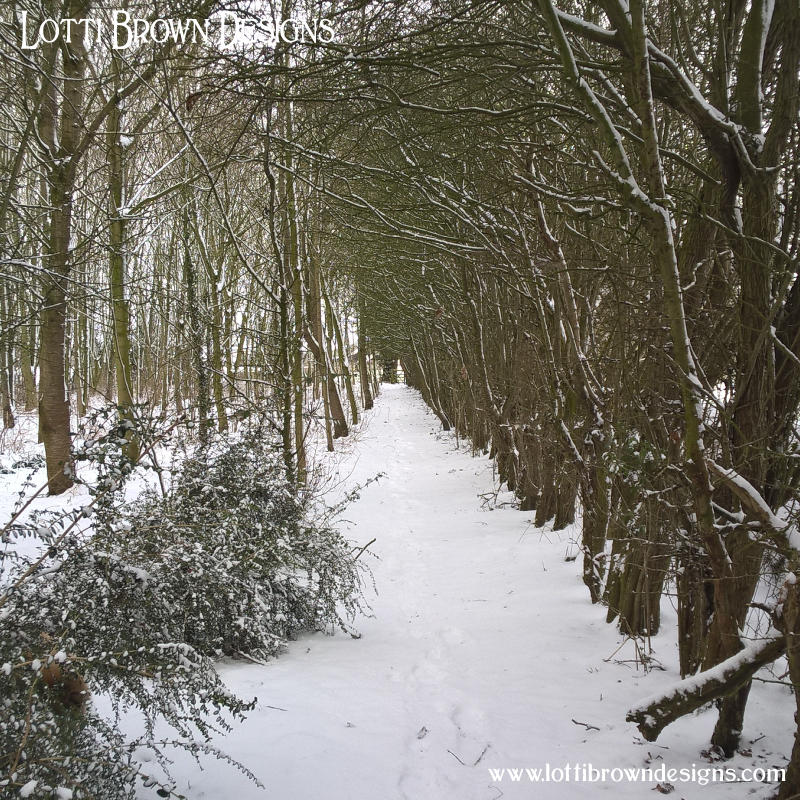 Tall hawthorn hedgerow
Tall hawthorn hedgerowHawthorn Tree Meaning
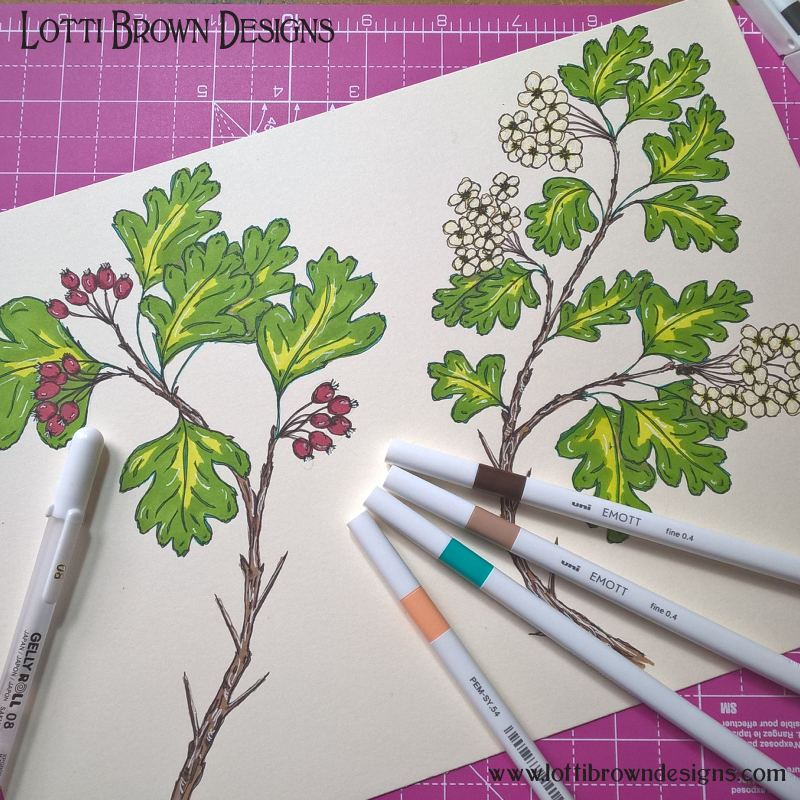 Hawthorn drawings
Hawthorn drawingsSo the hawthorn is certainly a tree to be respected – a tree that’s been part of our society and rituals for hundreds or thousands of years…
It’s a tree of healing and protection, a tree of love, passion, commitment and challenges.
It’s a tree of springtime and transformations and it’s a fairy tree…
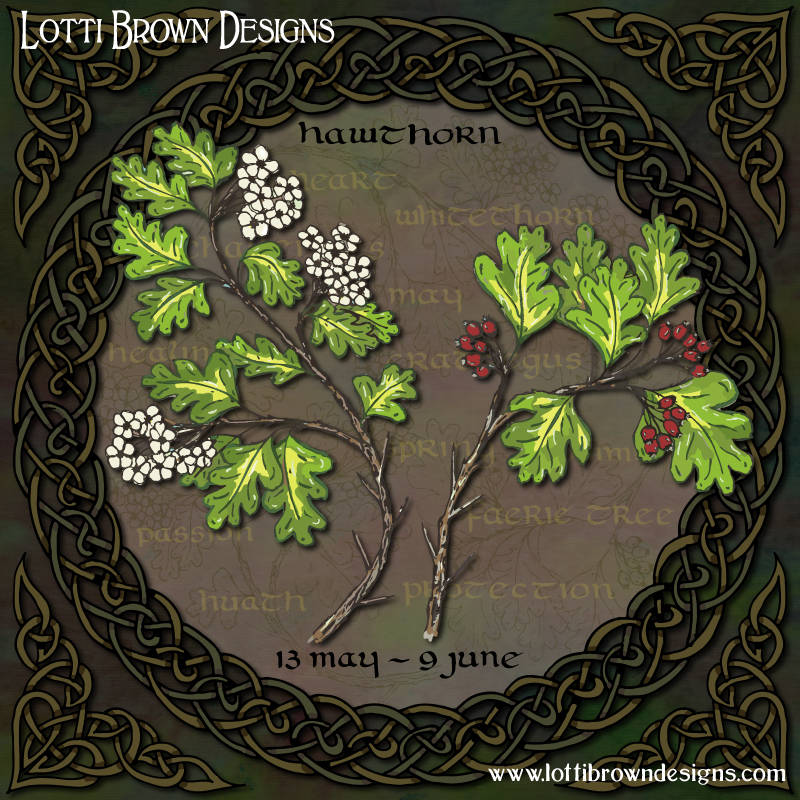 Hawthorn, Celtic tree calendar art
Hawthorn, Celtic tree calendar artMy Hawthorn Celtic Tree Calendar Art
I've created two versions of my hawthorn Celtic tree calendar art:
- Dated version (above) with the dates for the Celtic tree calendar month of hawthorn, 13th May to 9th June
- Undated version (top of the page) - without dates
You can buy both versions from my Redbubble store with worldwide delivery from your closest manufacturing centre (and customs refunds if you're charged) - art prints, T-shirts and sweatshirts, throw pillows and blankets, shower curtains, phone cases, mugs, notebooks, scarves, and lots more...
Here's just a small selection below - or browse everything at the links for each version (also below)...
Browse just a small selection of products available...
Browse all prints and products for both versions using the links below...
Explore my other Celtic Tree calendar artworks and tree meanings here...
Find out more about the Celtic Tree Calendar, what it is and how it was created, here...
See all of my earlier art here...
Discover more British nature folklore in my Folklore Hub here...
Explore my current art collections here!
Further Reading
- Britain’s Tree Story - J. Hight
- Tree Wisdom – J. M. Paterson
- Celtic Tree Magic – D. Forest
- The Celtic Wheel of the Year – T. Ward
- Stations of the Sun – R. Hutton
- Discovering the Folklore of Plants – M. Baker
- Plant Lore & Legend - R. Binney
- www.applethorn.org/bawming-day - accessed 6 May 2020
- www.vagabondtoursofireland.com/fairy-ireland-irish-mythology/ - accessed 6 May 2020
- www.somersetlive.co.uk/news/somerset-news/Glastonbury-famous-holy-thorn-removed-2917463 - accessed 6 May 2020
- www.glastonburyabbey.com/holy-thorn.php - accessed 6 May 2020
Please note that the information in this piece is for entertainment purposes only and should not be used to diagnose or prescribe for health purposes.
If you like the idea of feeling more connected with nature, you might like to explore keeping a nature journal - I love this activity for well-being and enjoyment as well as helping me feel more connected with, and part of, the natural world.
Shall we stay in touch..?
Each month, I share stories from my own nature journal, new art from my studio, and simple seasonal inspiration to help you feel more connected with the turning year...
Recent Articles
-
December Berries Folklore in Britain - Rosehips, Holly and Haws
Dec 24, 25 04:35 AM
Explore December berries folklore in Britain - rosehips, haws, holly, ivy and sloes - with seasonal nature notes, birdlife, and quiet winter magic. -
Birch Tree Symbolism, Myth, and Folklore
Dec 23, 25 04:19 AM
Explore birch tree symbolism, myth, meaning and folklore as part of my Celtic Tree Calendar art project... -
British Nature Folklore Library: Stories, Seasons & Celtic Tree Wisdom
Dec 01, 25 05:09 AM
Explore British nature folklore, Celtic tree meanings, and seasonal wildlife stories. A growing library of myth, meaning, and hand-drawn inspiration.
Follow me:
Share this page:



